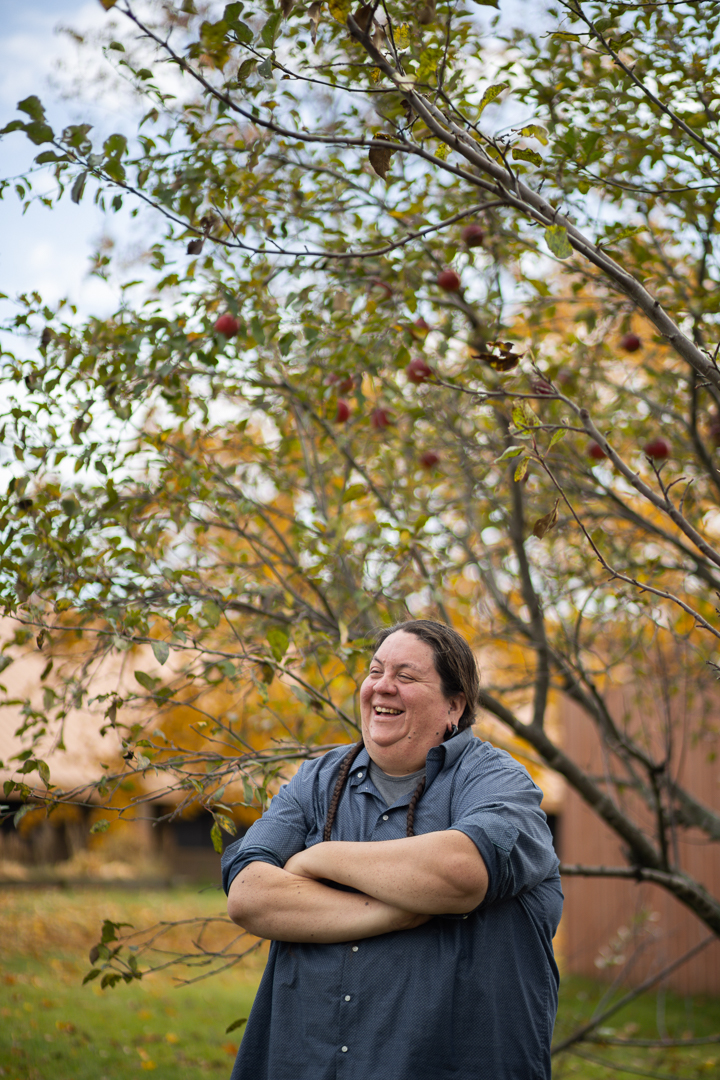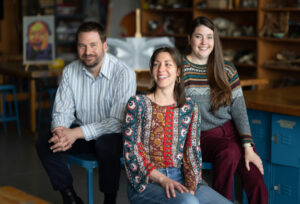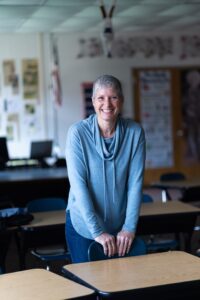I was full-on ready to be a full-time artist. And then I was invited to be a teacher at a summer institute in Denver, through the Native American Youth Outreach Program. I think it was seeing those kids connect to our traditional arts — part of our cultural inheritance that they had little exposure to before. It was seeing kids connect to our indigenous ways that changed me.
And so once I finished at the Institute of American Indian Arts, I came to UW Madison. I did a bachelor of fine arts and then went to Arizona and got my master’s in information resources and library science. I came back home and started working on digitizing Menominee language on cassette tapes. I did that for a whole summer. And then the opportunity came to be a librarian at the Menominee Indian High School. So I went over there, and then an opportunity opened up for me to apply for a position as a traditional arts teacher.
I inherited the program from an amazing teacher named Gina Washinawatok. She had a class called Traditional Menominee Crafts. When I took over, I noticed that there were behavioral issues for kids who didn’t want to do projects like beadworking. And so I started changing my way of thinking about how I structured the whole classroom.
Part of my archival work had been to go into different archives around the country and document the Menominee arts that were there. So I had taken photos and done a lot of digitization of ethnographers’ notes. I’d amassed this massive collection of things for our students to look at and get inspired by. A lot of these things were arts that had been forgotten or forcibly taken away. And so the challenge in that classroom was to have our kids look through those things and find an interest, and then pursue that through research: thinking about how those ancestors created it and why. What are the tools that were needed to create something like that? How do we make it now?
And that would be your final project: exploring how we reclaim our indigenous ways of being.
I would tell my students that it was important for them to understand that there was going to be a lot of failure in this. I couldn’t take them step-by-step on how to create something in this format — the onus would be on them to develop that themselves and share it with others. And because the kids were all creating different things, my teaching had to develop in a different way. The kids had the deeper understanding.
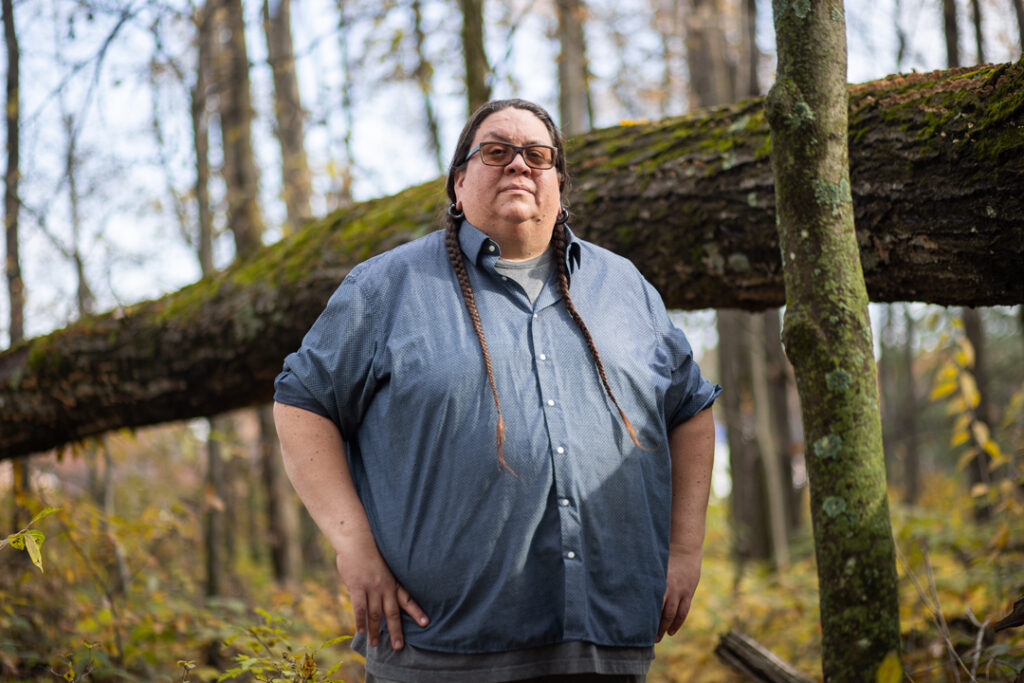
At the high school, I created a class on indigenous representation in film. I would show the film, we’d have a short discussion, and then I would have them do a movie review. But then I started thinking about having the kids connect to our ancestors who may have lived during the silent era or John Wayne’s period. You know, write a letter to that ancestor and ask them questions. Really starting to think about what it meant for a Menominee living in the 1930s and 40s, watching Indians on film.
Right now, there’s a big boom in indigenous representation in television and film, so a lot of these kids don’t have the perspective of growing up with ‘all Indians have a headdress and horses.’ They don’t have the perspective of ‘all Indians are Plains Indians.’ It’s different for us, it’s different for people up in Alaska and in Canada, and it’s different for people down in the Southwest. We come from over 500 different tribes — even more way back when — and each of us have a different culture, a different language, a different understanding of the world. And so I think recognizing that we’re not a monoculture, getting kids exposed to that, and asking those deeper questions is powerful.
When you get to a film like Wind River — about missing and murdered indigenous women — or Indian Horse, about the boarding school era, how do you approach that without triggering students? Or, if it does trigger somebody, how do you address that in a safe learning environment? Not an easy thing to do. But I think it’s important for us to have those conversations at a high school age because those conversations are beginning to develop in them. Even if they can’t fully recognize some of the things that their parents or grandparents or great-grandparents have gone through, they can start asking questions in the community. They can get a better understanding of the resilience that our ancestors had to have in order for them to be in a class like that now.
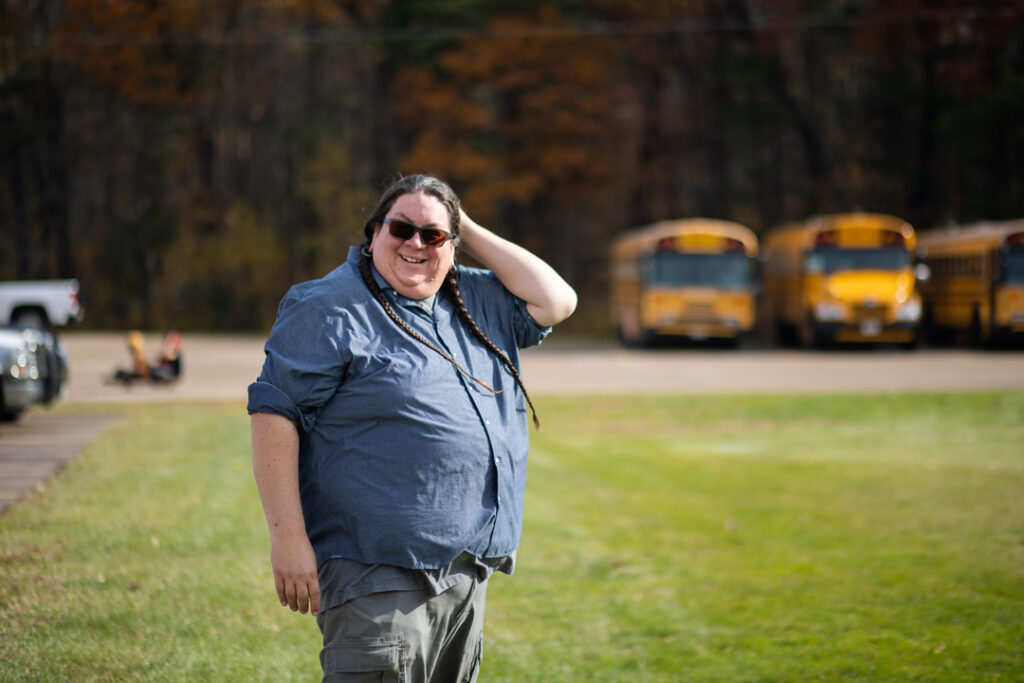
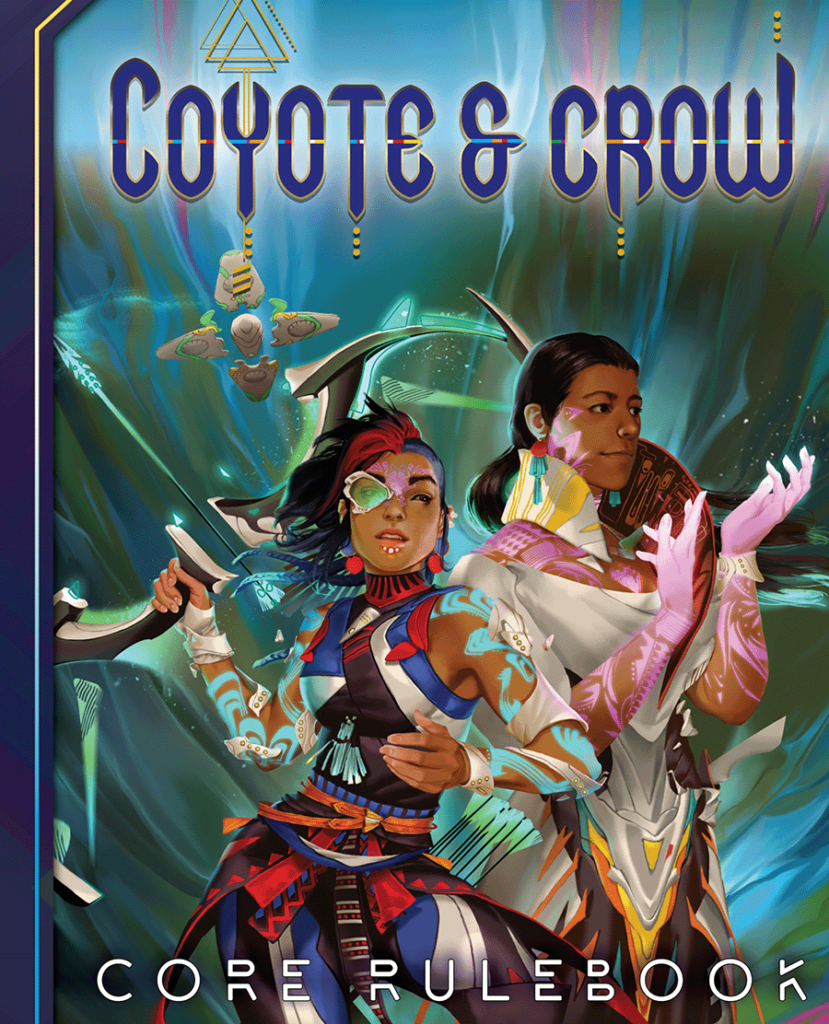
When you start talking about representation, it reverberates out. Not just a historical perspective of indigenous people, but Indigenous Futurisms too. It’s like Black Panther: What would happen to indigenous cultures if they were left uncolonized, to grow and develop on their own?
So we didn’t just have a film class, we had a game club at the high school too. And in role-playing games like Coyote & Crow, some of those questions come up. The kids can become a character and ask themselves, ‘If Christopher Columbus didn’t come over and start conquering, what would all of these indigenous tribes look like?’
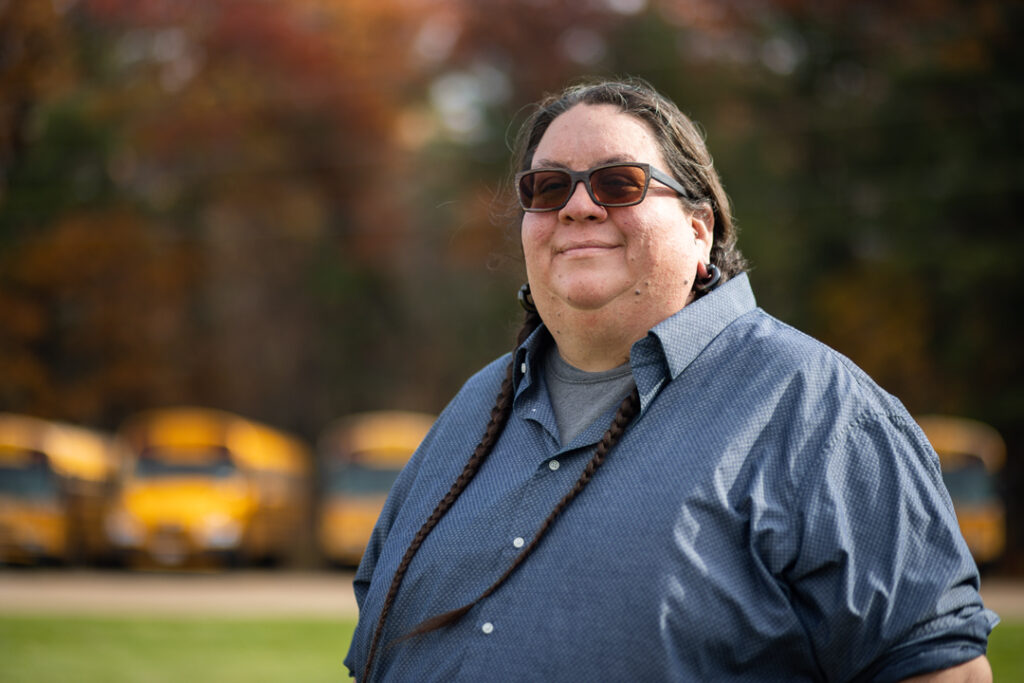
For me, it’s about creating a safe space for our kids. First and foremost, before any other kind of education happens. Are they hungry? Are they tired? So I created a space where they felt comfortable. If they had a hard weekend, they’re just beat, there’s no way that they’re going to be able to put their good intentions and their best foot forward in my class. Sometimes it would take an entire semester to get through to a kid. They would want to sleep, and I always had things for them to eat. But when that connection finally happened, then they felt comfortable, they felt safe, and then they exploded in the arts and the things that they were doing — they were creating amazing things, even though it wasn’t the entire semester. And you have to be okay with that. You have to change the way that you think about how we grade our students and think about what’s really important to them — what’s really important to us and to our whole community.
I would never, ever want to give a child a failing grade and turn them off to our traditional arts forever. I would never want that to happen. My class needed to be a safe place for them to be. To create. And sometimes if they made one project in a semester, that’s what I would grade and that would be fine. They felt safe. That’s what was important.
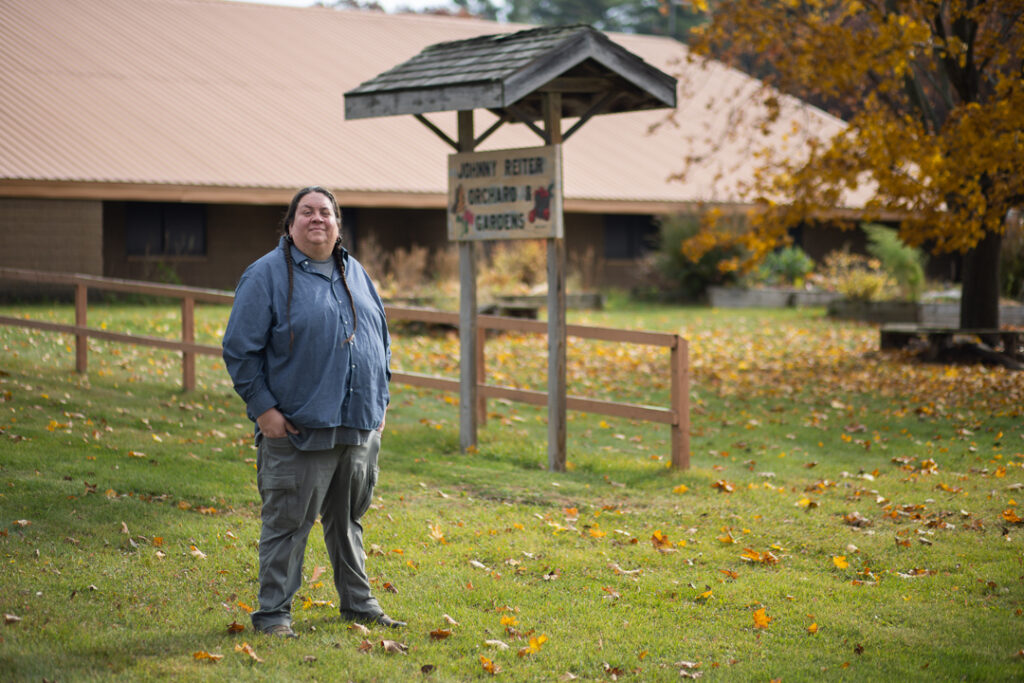
I think of one kid in particular. I had the hardest time with him. And this is me at the beginning of my career, in the traditional Menominee crafts class. This is why I changed all the classes and created more diverse options for our kids — because of this one kid.
He was fun. He made me laugh. We had a great time. We had really cool conversations, but he didn’t want to do any beadwork. And I’m like, ‘Alright, so what do you want to do?’ He said, ‘Well, I’ve always wanted to make a lacrosse stick.’ So I built a shaving horse to help him do the carving, and I set it up in our back room. It was the lightswitch for him. He was enjoying himself, he was coming into class, wanting to be there, wanting to spend extra time on his project outside of class. And so I thought if I could reach him in that way, there’s got to be a way to do that for more of our kids. Hopefully all of them.
I think that was the pivot point in my educational journey, where I started looking more towards the needs of our kids, versus the curriculum laid out by me.
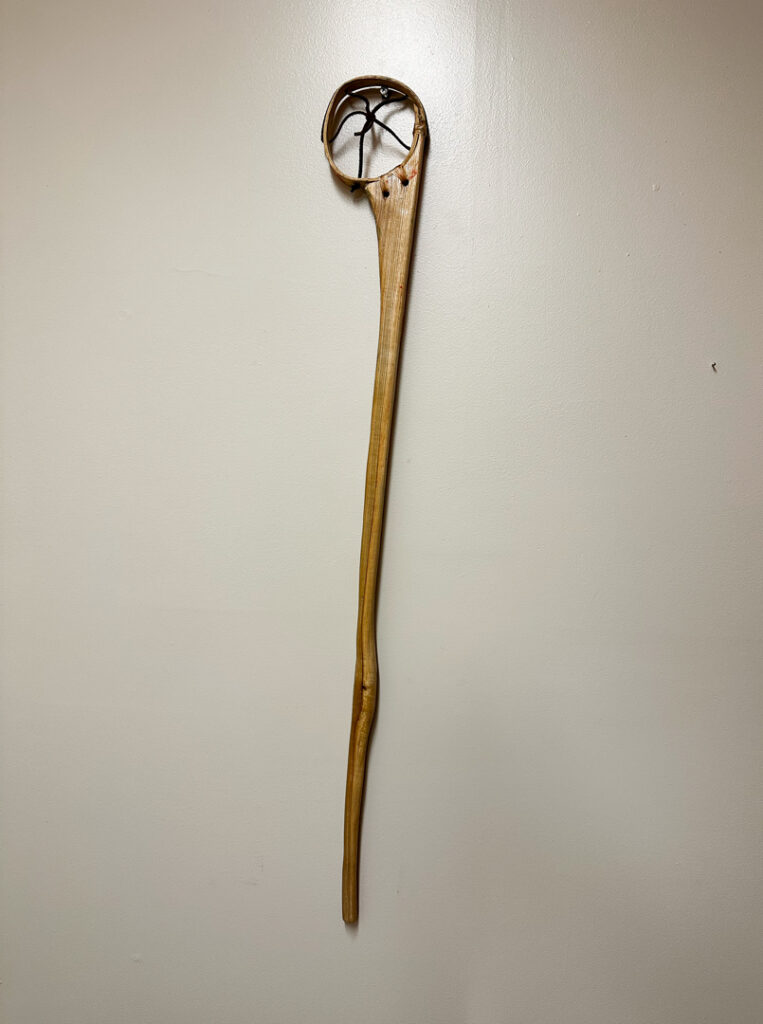
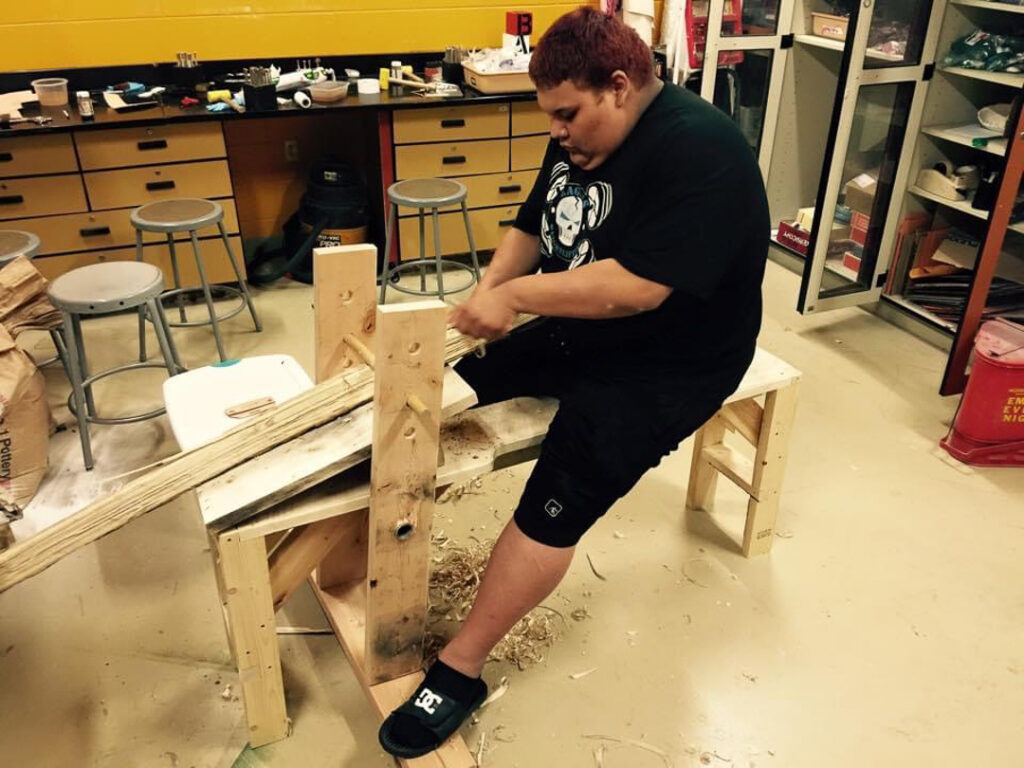
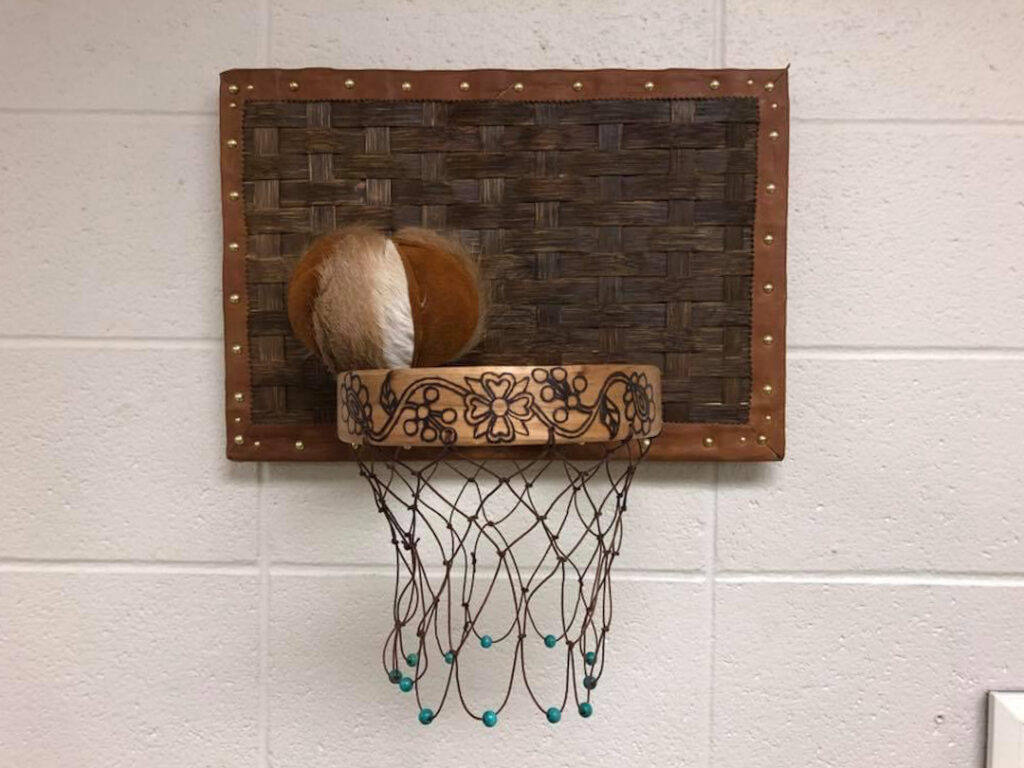
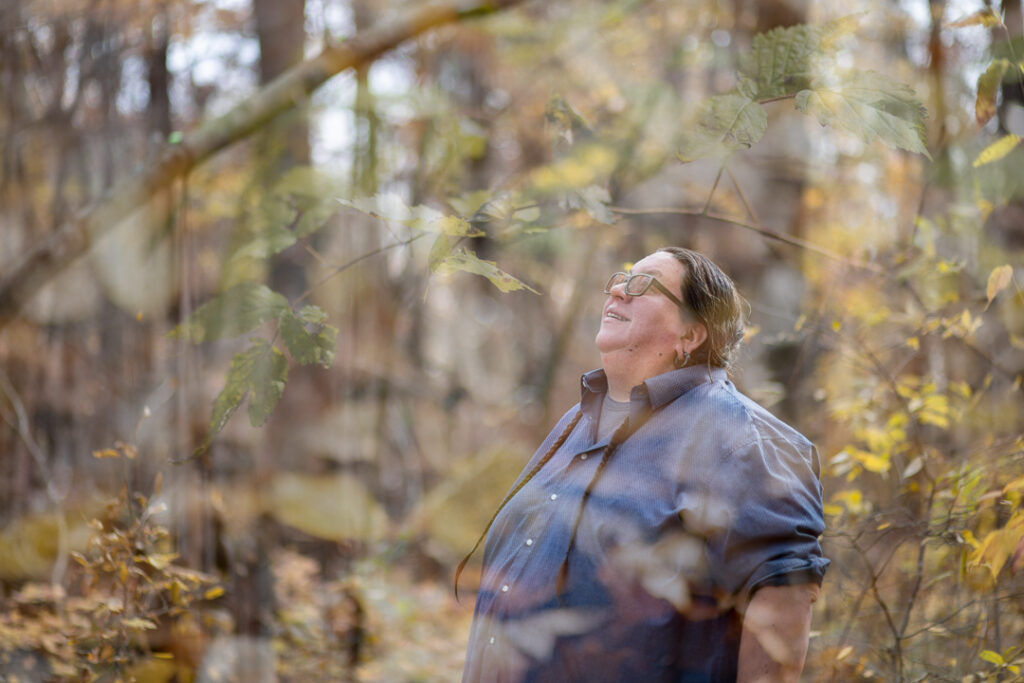
It was passing time one day. And one girl — I could tell that something had happened to her, either in the hallway or in class. She was really upset. She came into my room, slammed her books on one of my tables, closed her eyes, and breathed. She breathed, and then she walked out. She just needed that safe space.
I think that’s something I learned from Gina, the woman I took over the class from: her classroom was always peaceful, always calm. She did not have the behavioral issues that a lot of the other teachers had, and I didn’t either. We had a mutual respect with our kids.
Creating a safe space for our kids is going to go far beyond any of the knowledge that you’re able to impart. If they’re not safe, if they’re not comfortable, if they don’t feel loved in your classroom, then they won’t be ready to learn. I think that being a teacher doesn’t mean you’re just imparting the knowledge that you’ve gained or the knowledge that you think that they should have. It’s really creating a connection, creating a small community within your classroom where they are able to express themselves and become the people that we want them to be.
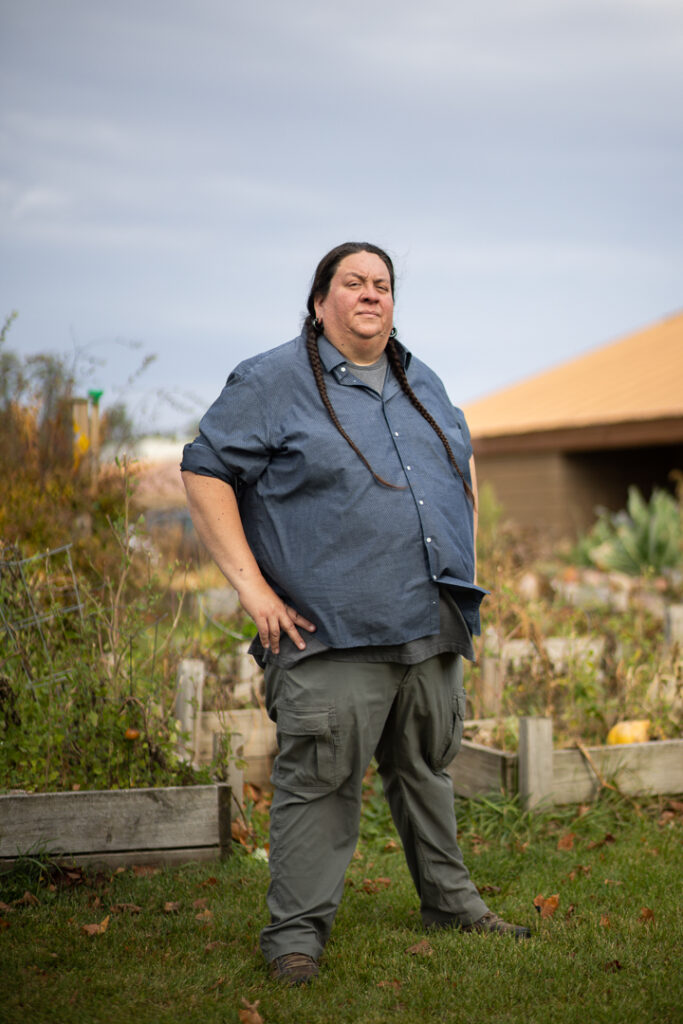
Everybody seems to know it’s ‘hard’ to be a teacher. I don’t think everybody understands how hard it really is. It takes a toll on you, learning about the traumas that our kids go through. Learning about the homeless situations, the lack of food, and what’s happening in the homes.
If you’re really good at what you do, you create this deep, deep connection with these kids. And you have them for maybe a year, maybe a few years, and then they’re off. And you hope that you’ve created some kind of lasting impact on them. For me, I want our kids to be able to teach the things that our ancestors handed down. Not just the art, but the feeling of being in a community and connecting to our ancestry. That’s really hard to do. And it’s really hard to create those connections and then let them go, you know, and let them be who they need to be.
I still have connections with all my kids, because I live in the community that they’re from. When you hear of a child passing — or not a child anymore, but someone who you had in class — sometimes it’s not in good circumstances. And it’s like losing a child.
That’s the hardest thing for teachers that people may not understand: how emotionally invested you are in these kids.
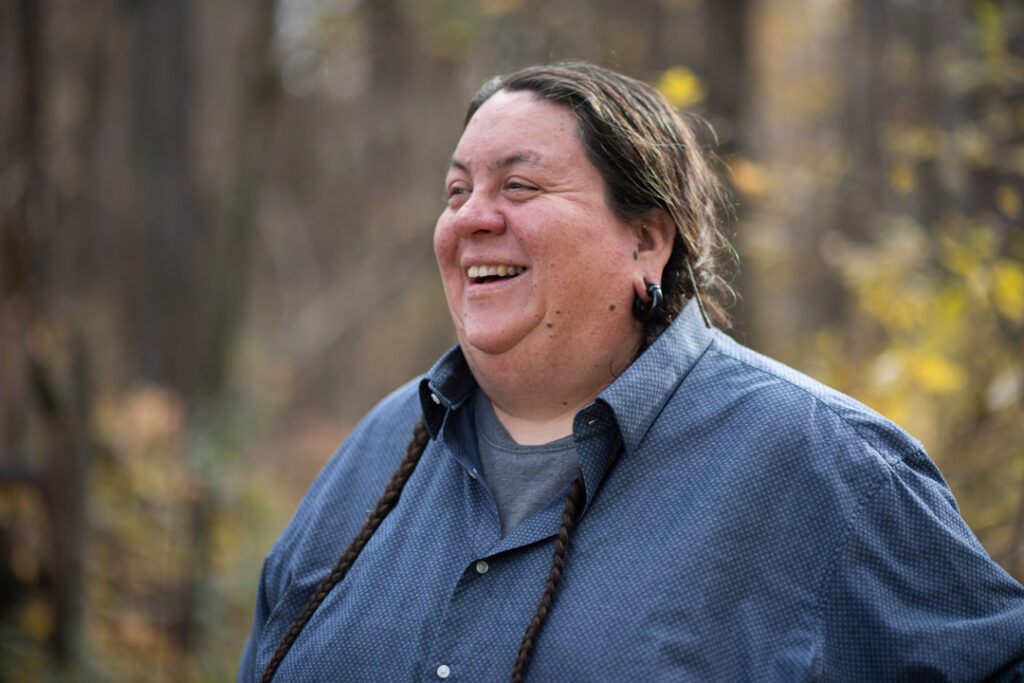
To keep teachers in schools, I think we need to create a community within each school. A teacher community. It’s really hard to want to be somewhere if you don’t love what you’re doing and love the people you’re around. And so I think that developing that place where people feel welcome and loved goes beyond just the classroom. It’s the whole environment. And if you don’t have that, then it has ripple effects throughout the school. Kids feel everything.
Schools have professional development days, and I think they could be utilized a little better. I think that we could do things together. Year after year, schools bring some kind of expert in and try a new method out, and teachers are all expected to do it. And then it’s gone. And then there’s something new. Those things are good to a point, but I think that developing the community is key.
I want to come in and know that I’m supported and loved so that I can do my job efficiently. I can only worry about what’s happening with my students in the classroom, and I can’t have all these other things happening externally. Because it really takes all of your effort and all your strength and all of your will to be an effective teacher.
I don’t know the answer, in terms of what can be done to retain teachers. But in a general sense, I know we need to bring our teachers together. Bring our staff together. Do some amazing things with each other so that we know that each of us has each other’s backs. Just like with the kids, adults need to feel safe before we can do the work.
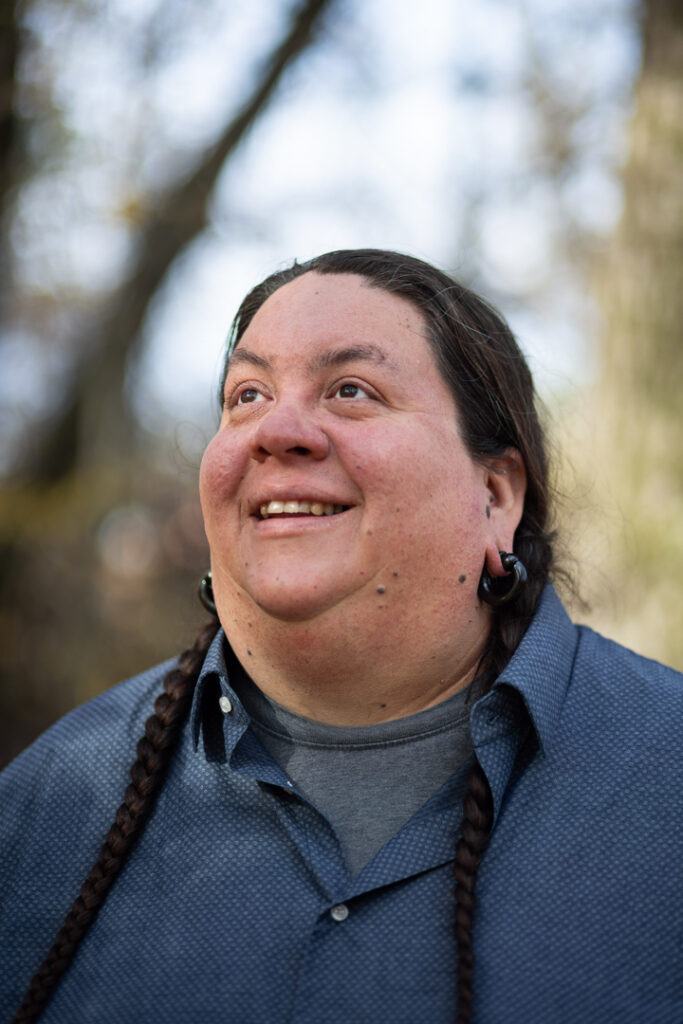
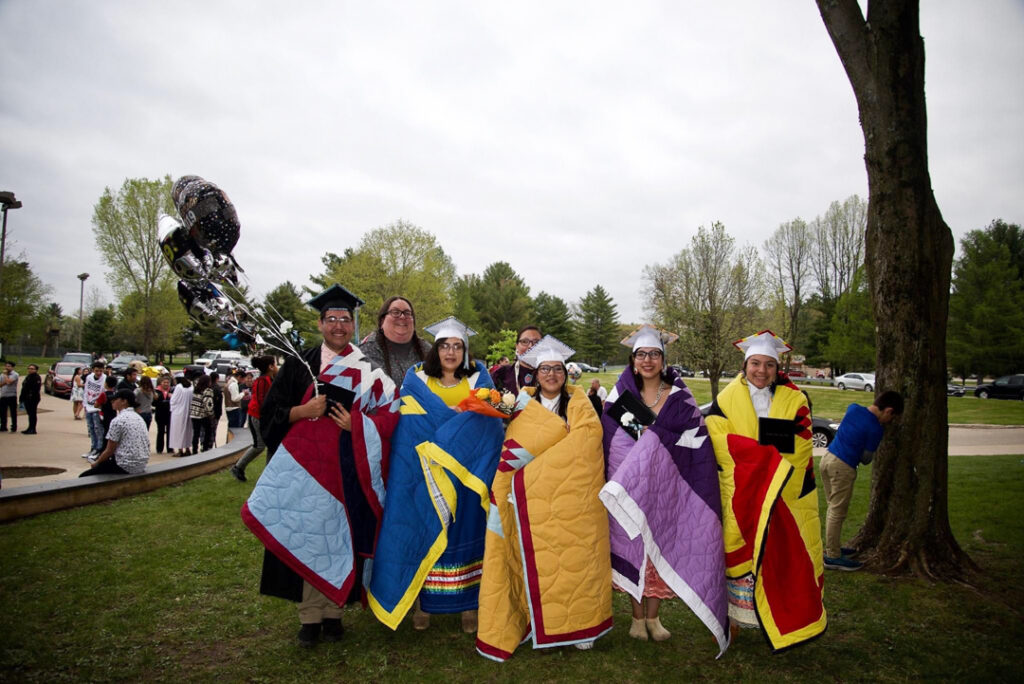
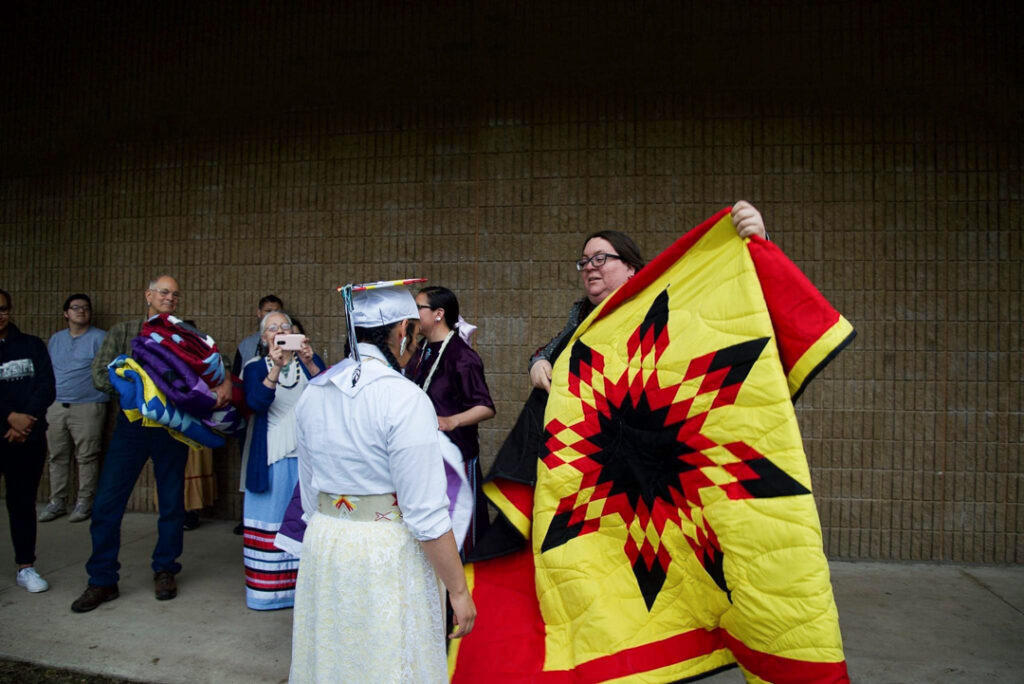
I was on a Zoom call recently, and this teacher from UW Green Bay mentioned that one of her students was one of my students, and that she told her that she doesn’t know what she would have done if she didn’t have my class. Hearing that from somebody else, I got emotional. It’s hard to hear those things, but it’s good to hear and feel and understand.
When this other teacher was describing it, she said this student was unsure about being in our school. She had transferred from another school, and my class was a safe space for her to grow and develop and become the person that she is.
I developed a pretty strong relationship with this little group that she was in, doing extracurricular activities, taking them to leadership trainings, taking them to a traditional arts gathering up in Michigan. I got this blanket for being a part of the Menomini yoU board, and then we did the same thing for these kids when they graduated. We gave them blankets as an honor, for being part of our family. Then the kids decided they wanted to bring back wearing traditional regalia to the graduation ceremony. And so they started that again, and it was pretty amazing.
Seeing them thrive outside of school, seeing them take steps to better themselves and better the community… all these fundamental lessons that I wanted to impart on them, I’m kind of seeing that now. I’m seeing it come back. I’m seeing them pass that on and bring those teachings forward. And I get to walk through our schools and see that a lot of the kids I taught are now teaching.
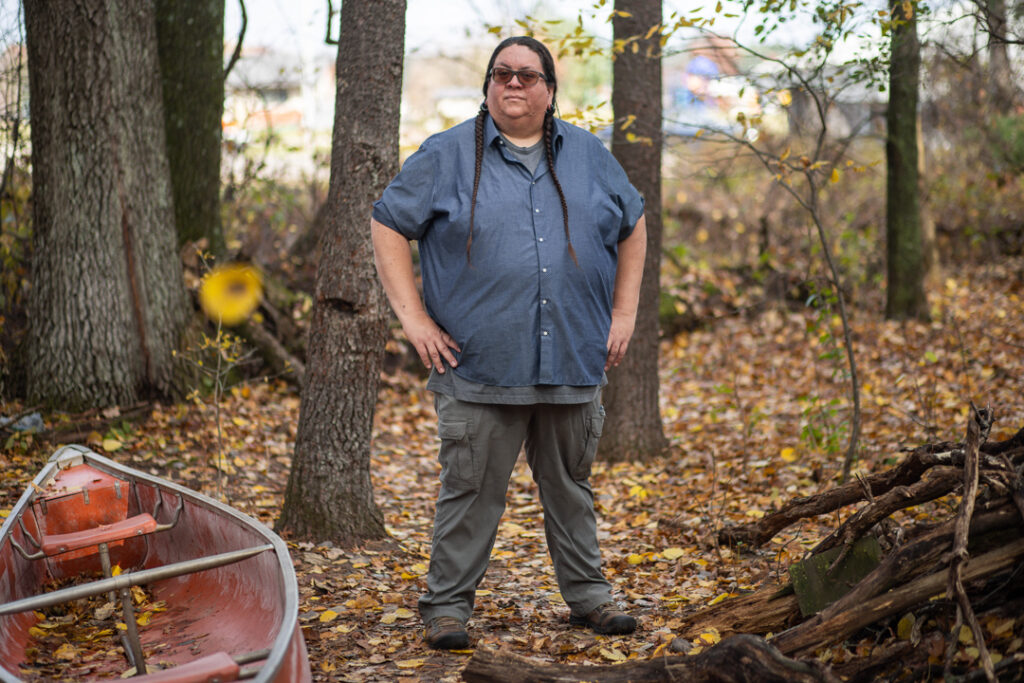
We’ve now started this immersion program where we’re trying to reconnect to a traditional way of teaching. What does Menominee education look like? What are the approaches that we can take to get to a truer form of Menominee education, even though we won’t be able to go out and ask the elders who have passed? We have to do the research to figure out how they learned the things that they learned.
So in this immersion school (called Kaehkēnawapahtāēq, which means ‘we learn by observing’), we have two teachers who have been trained in Menominee language. They were working in Menomonee immersion at our Head Start and daycare, and they moved over here to progress with our kids. These kids grew up in immersion through daycare and Head Start, and they’re now in PreK and K. What we’re doing is connecting them to the language and then looking at things like Montessori and Waldorf — taking elements out of each of those that we think are as close to a traditional Menominee education as possible. Following the interests of the child.
People might wonder why I worked at the high school for 14 years and then moved to early childhood. But I’m doing the same thing I did at the high school: taking what I saw our kids needed and creating a program around those needs. It’s a progression.
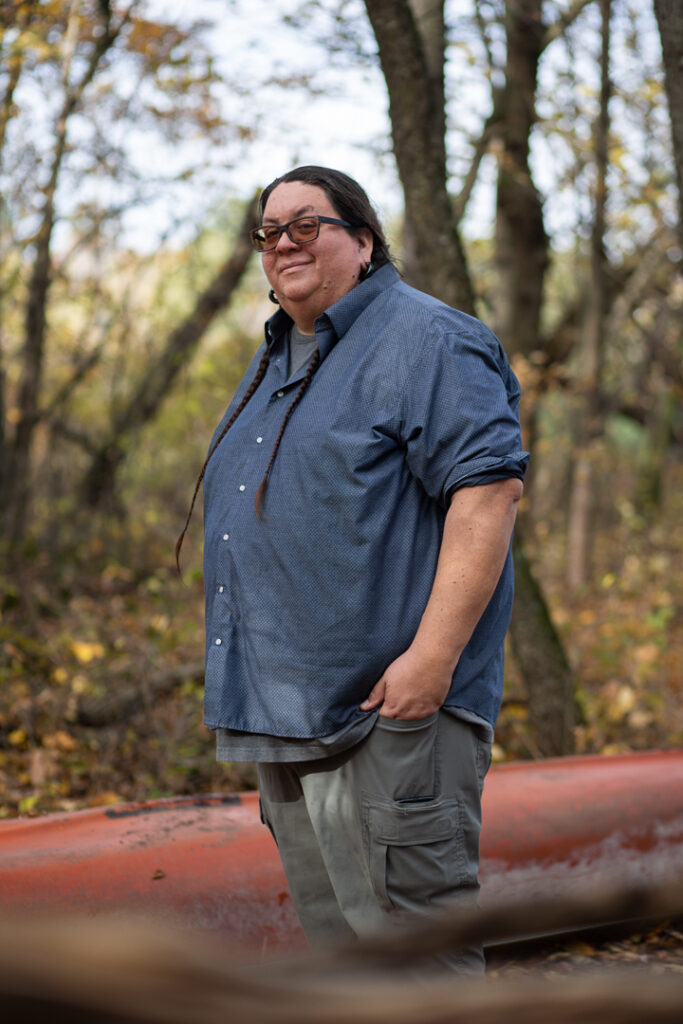
We can’t go through life complaining about the things that we see are wrong. We need to have solutions. We need to be able to think creatively.
Maybe the education system does not work for you. But there is something that does. So how do you find that solution? How do you help bring that solution to light? And how do you connect with other people who may also want that change?
Education is never stagnant. It can never be the same. It can never be repeated year after year, because we all change and our needs change. The needs of our community change and the needs of the world change. So education always has to change with it.
–Benjamin Grignon
Menominee Language and Culture Coordinator at Menominee Indian School District
Keshena, Wisconsin
You can learn more about Ben’s new school, Kaehkēnawapahtāēq, by listening to this interview with Ben and a colleague on Wisconsin Public Radio: Kaehkēnawapatāēq (We learn by observing)
